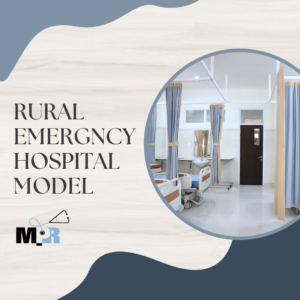Rural Emergency Hospital (REH) Model 2022
Since 2012, hospitals in the state of Kansas have been exploring alternative rural health models for Kansas communities. The Primary Health Center model was under thoughtful consideration as a sustainable option for rural communities. The concept was being tested through the help of the Kansas congressional delegation until the Centers for Medicare & Medicaid Services (CMS) released the passage of a Rural Emergency Hospital (REH) model as a new payment and delivery model. The REH is very similar to the Primary Health Center model and is a permanent solution for rural communities to consider. (Kansas Hospital Association)
Driving Forces
- Americans who live in rural areas of the US make up 20% of the population and experience a shorter life expectancy. They often travel greater distances to see health care providers as rural communities have fewer local doctors. Concerns that the inequities that many rural Americans face trend for poor health access and worse outcomes overall.
- Many rural community hospitals are closing. Between 2010-2022, 138 rural hospitals stopped providing inpatient services. 44 of the 138 were Critical Access Hospitals (CAHs). During this same time, there were 75 complete hospital closures where all services ended. Rural hospitals report they continue to face the threat of closure because they lack sufficient patient volumes to offer traditional hospital inpatient acute care services required for Medicare payment.
- The demand still exists for emergency and outpatient services in areas served by these hospitals.
 Currently 1673 hospitals are eligible to convert to REHs nationwide.
Currently 1673 hospitals are eligible to convert to REHs nationwide.
Definition
The Rural Emergency Hospital (REH) definition includes:
- Hospital facility enrolled in the Medicare program
- No more than 50 beds
- Does not provide any acute care inpatient services
- Has a transfer agreement in effect with a Level I or Level II trauma center
- Can transfer patients to a Skilled Nursing Facility (SNF)
- Meets requirements of a staffed emergency department
- Meets staff training and certification requirements
- Meets certain CoPs applicable to hospital emergency departments and CAHs, with respect to emergency services
- Provide observation care
- Can/may provide other health services as outpatient basis
- Staffed ER 24/7
- Have a physician, nurse practitioner, clinical nurse specialist, or physician assistant available to furnish rural emergency hospital services in facility 24 hours/day
The rules of the REH are effective January 1, 2023. Accessibility, availability, affordability and acceptability are just some of the considerations of making the move to the REH model. Other considerations are swing-bed reimbursement, increased Medicare payment and monthly payments to the hospitals under the REH model.
Medical Provider Resources takes pride in being a helpful resource when it comes to medical credentialing, verification and insurance enrollment in the medical industry. Please visit our resources page for more helpful articles!



